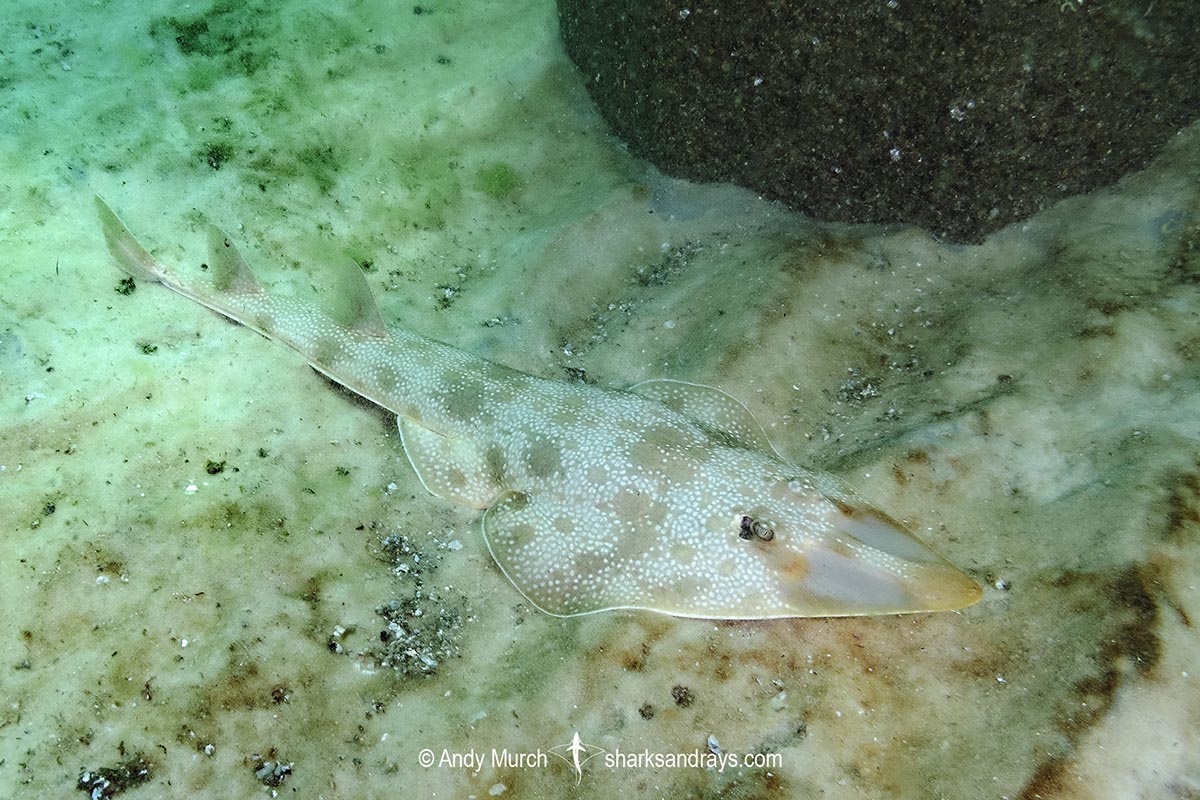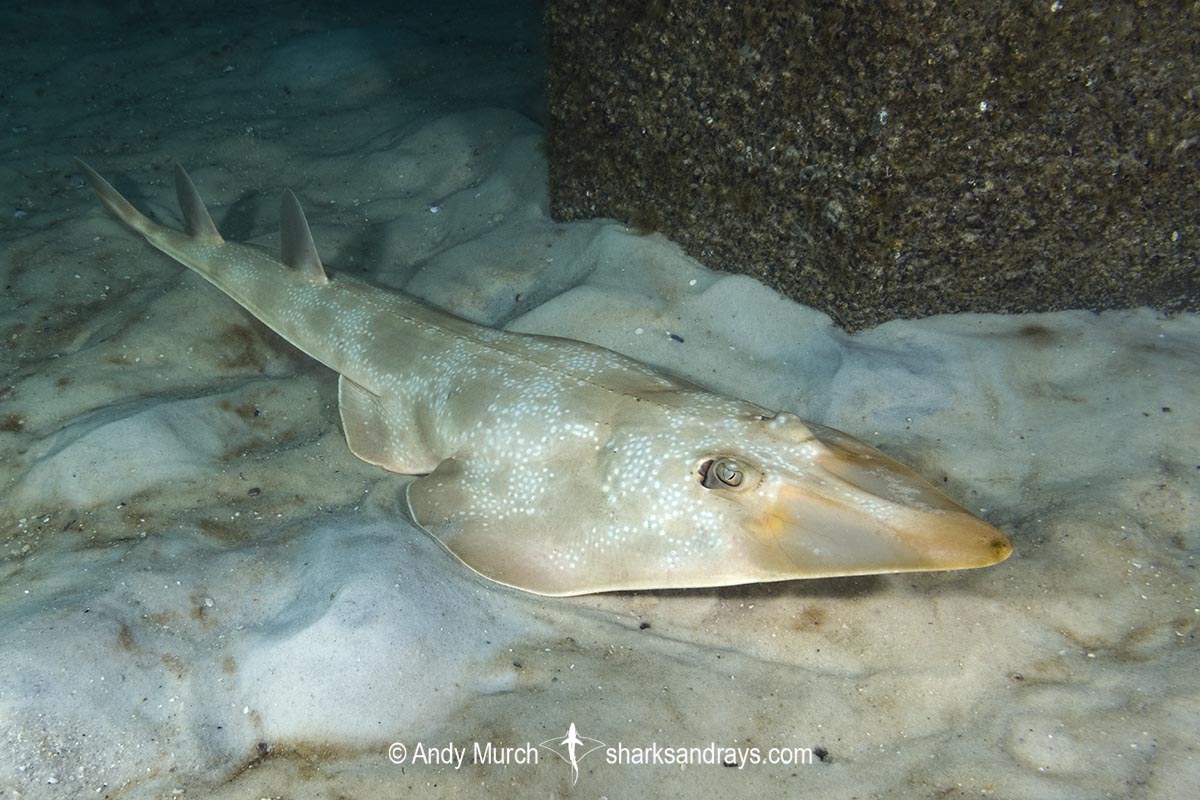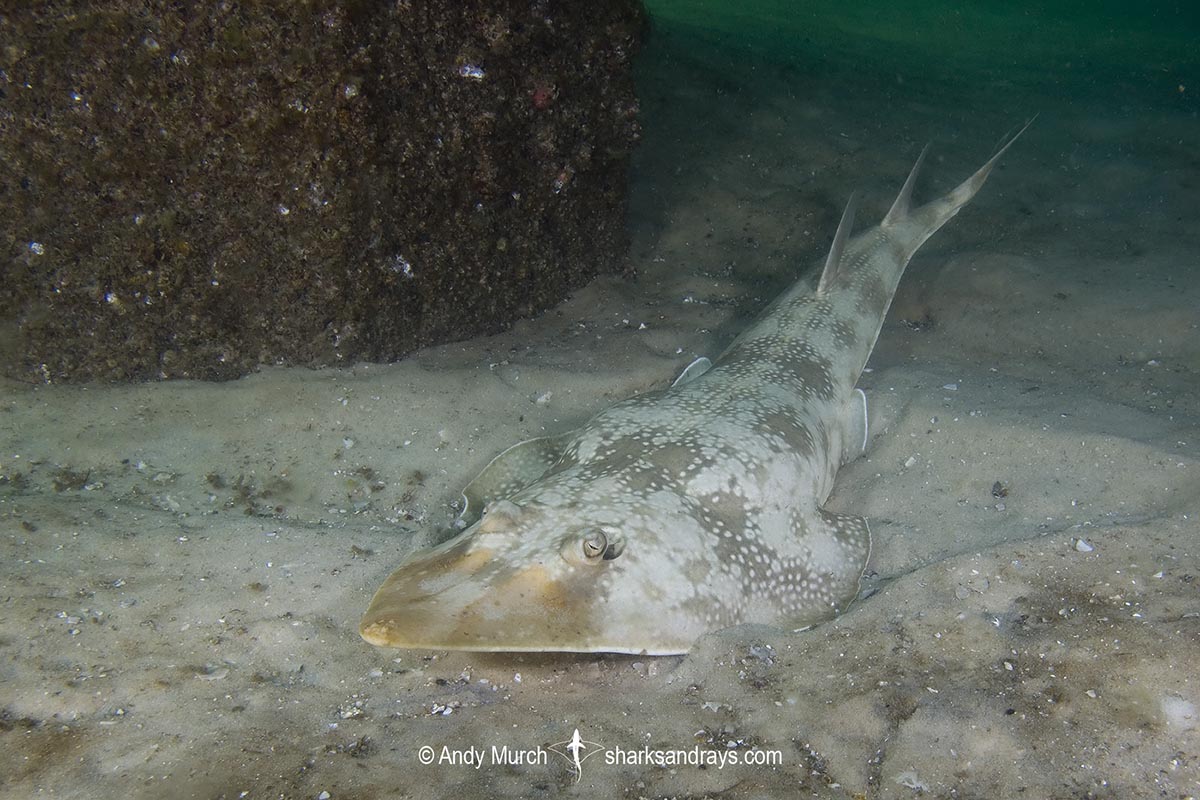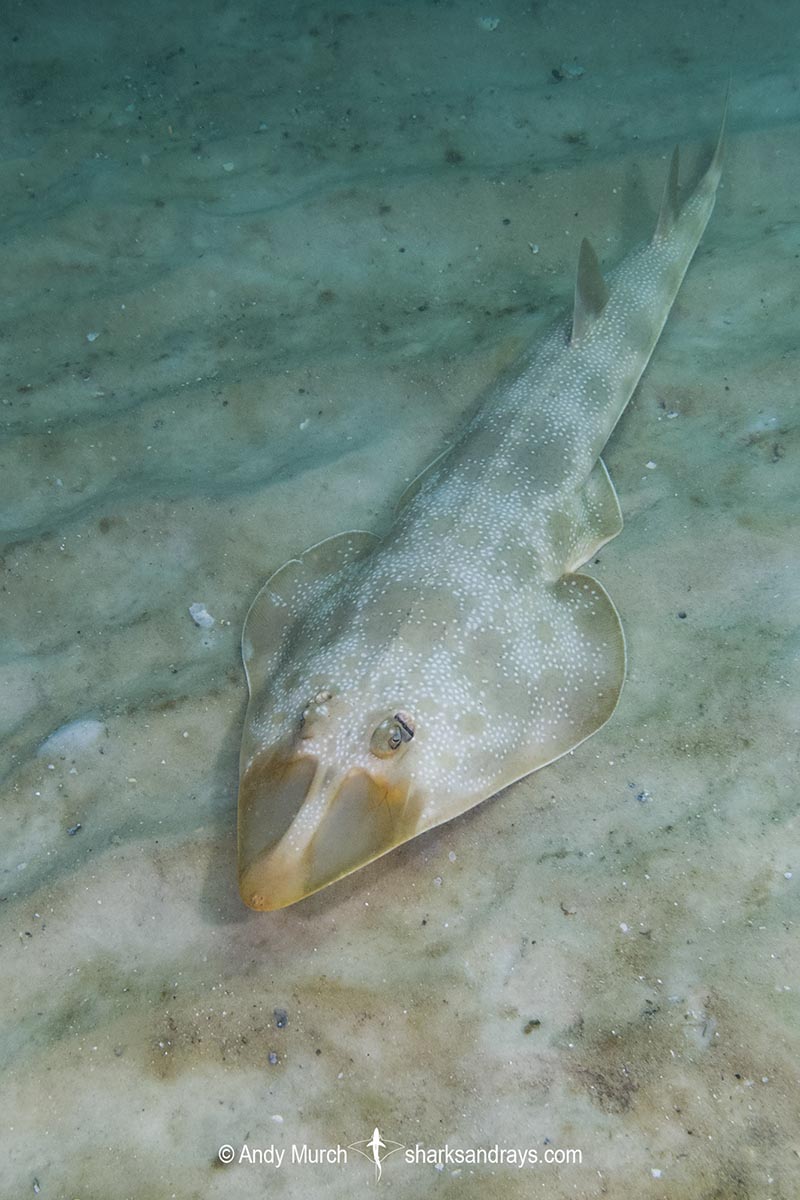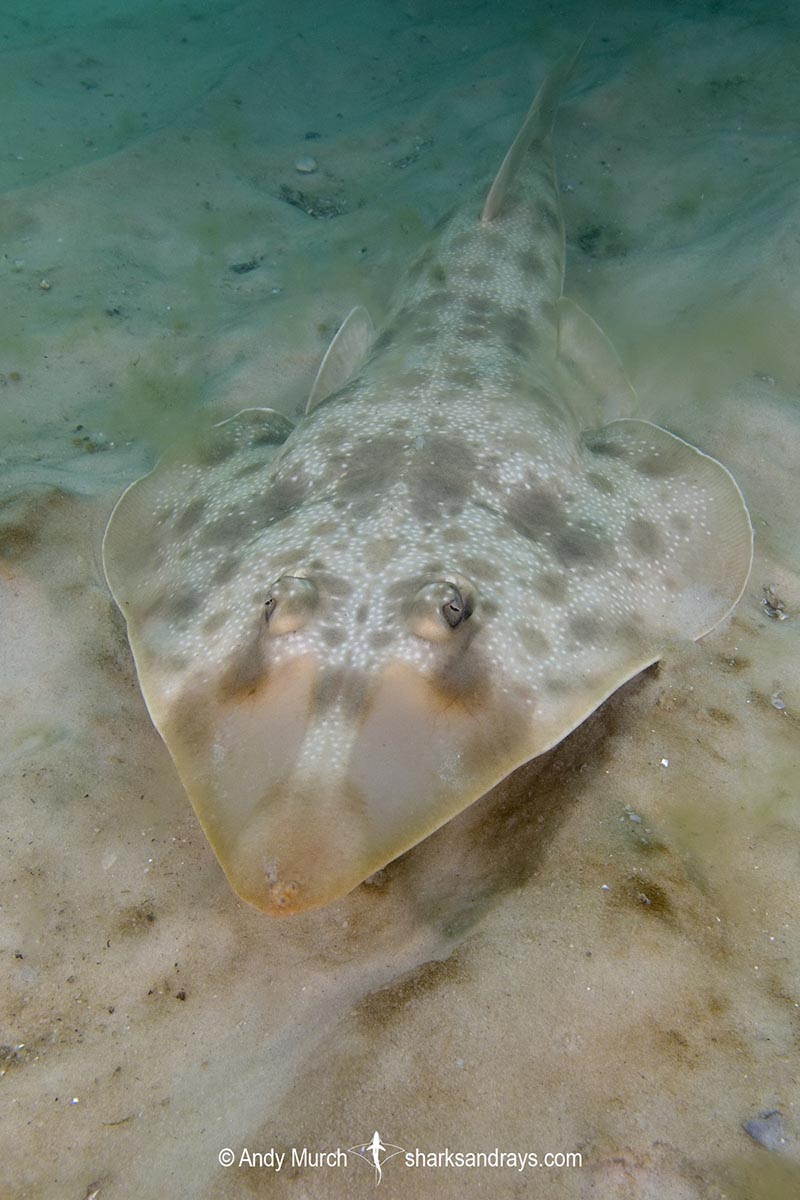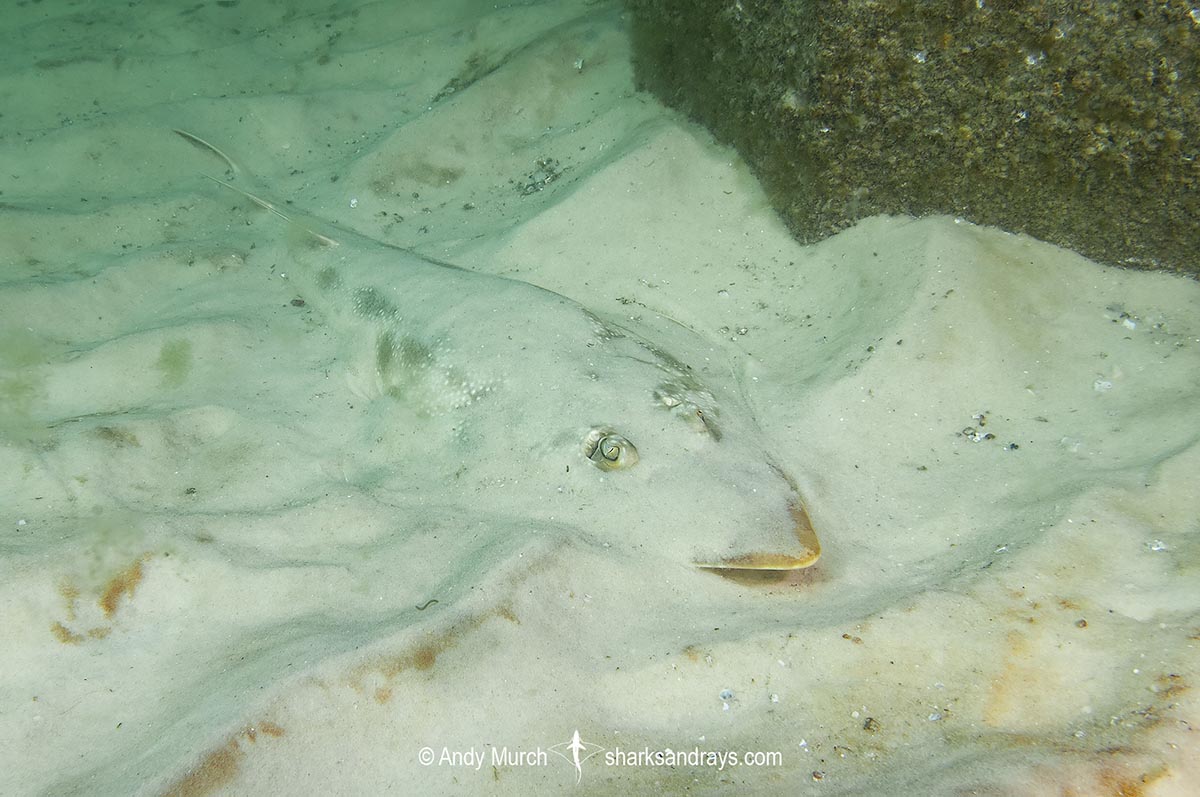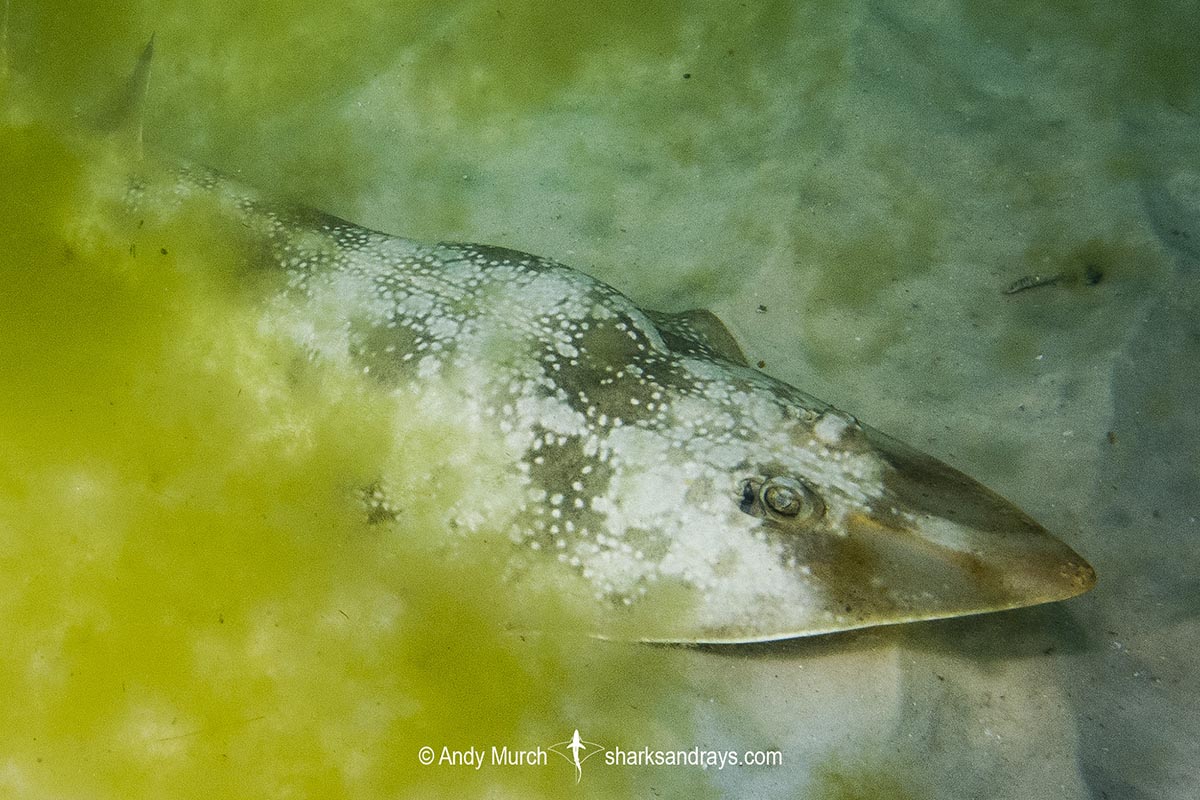Common names
Atlantic Guitarfish, Freckled Guitarfish.
Binomial
Pseudobatos lentiginosus.
Synonyms
Rhinobatos lentiginosus, Rhinobatus lentiginosus.
Identification
A medium-sized guitarfish with a moderately long, wedge-shaped snout with narrowly rounded tip. Rostral ridges relatively broad, parallel, and narrowly separated throughout their length. Eyes large. Snout length ~4.5 x orbit length. Spiracles have 2 skin folds on posterior margin; the outer skin fold larger than inner. Nostrils large, positioned obliquely. Nasal curtain absent. Large anterior nasal flaps extend slightly beyond nostril opening.
Anterior margins of disc straight. Pectoral apices broadly rounded. Skin completely covered in small denticles. Small thorns on snout tip, around orbits and above spiracles, on shoulders, and along midline and tail.
Tail robust and long; 1.5 x disc length. Dorsal fins large and well separated, with narrowly rounded or angular apices. Caudal fin triangular, without a defined lower caudal lobe.
Colour
Dorsum greyish-brown to dark brown, with a dense covering of small white spots. Areas where spots are absent contain dusky blotches that combine to form broken transverse bars or saddles. Blotches on snout may be golden. Rostral cartilage bluish-grey. Ventrum yellowish.
Size
Maximum length 78cm. Size at birth ~20cm.
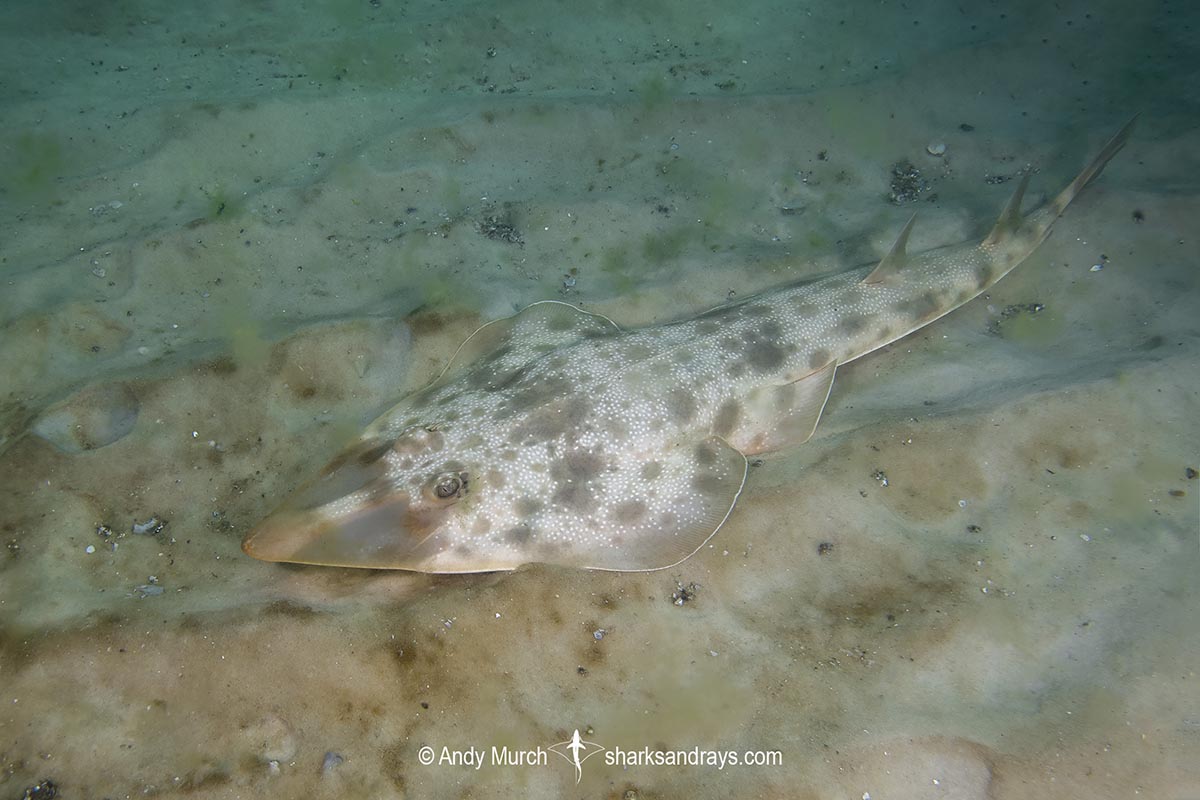
Conservation Status
VULNERABLE
In the USA, the Atlantic guitarfish is rarely captured because there is very little trawling activity within its range. Elsewhere, it is targeted and a retained bycatch in trawl, handline, and gillnet fisheries with very little oversight in parts of its range. It is the third-most caught species in bycatch In the Mexican Caribbean. In northern Brazil, unmanaged trawling and gillnetting has led to steep declines and local extinctions of many elasmobranch species. The Atlantic guitarfish is also threatened by habitat loss and degradation due to coastal development and oil exploration.
It is estimated that the Atlantic Guitarfish population has declined by 30-49% in the last two decades alone.
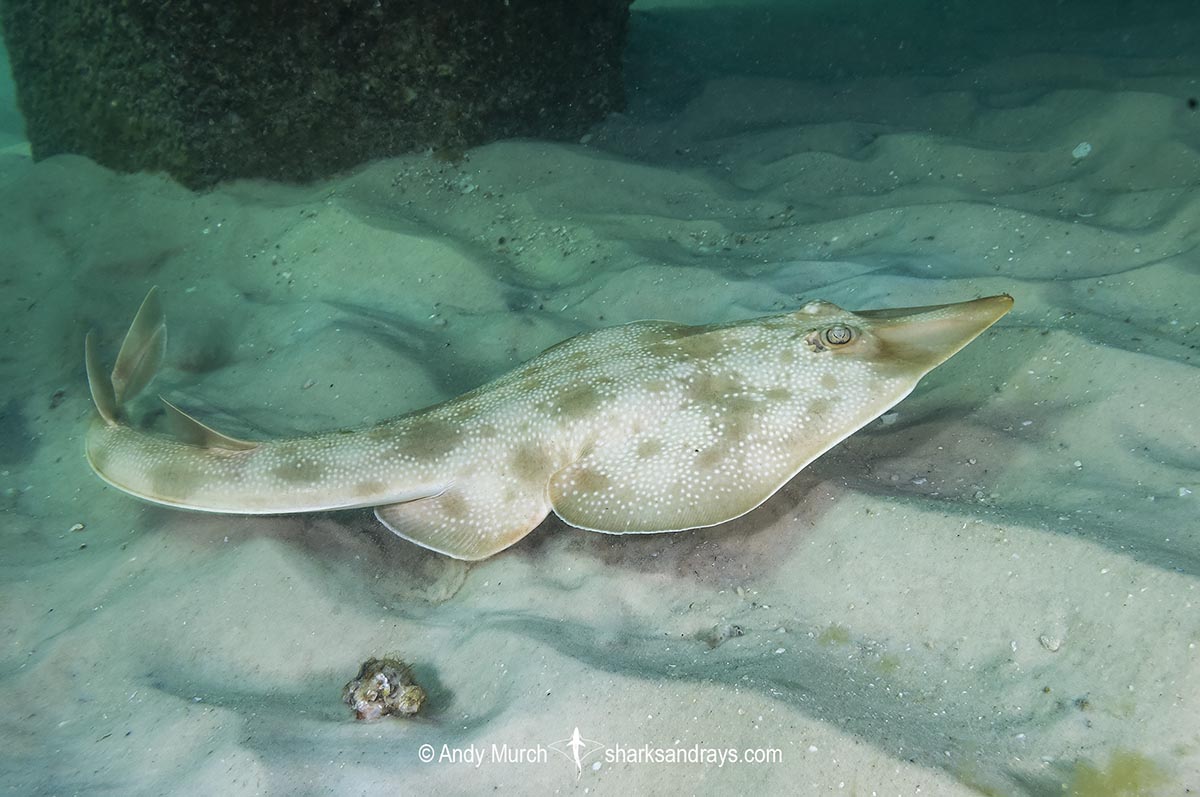
Habitat
Tropical/warm-temperate seas. Benthic in shallow coastal environments such as estuaries, sea grass beds, sandy bays, and patch reefs. From close inshore to ~30m.
Distribution
Western North Atlantic. The freckled guitarfish occurs from North Carolina, USA to Nicaragua including the Gulf of Mexico. Records from Brazil need confirmation.
Reproduction
Aplacental viviparous. Litter size up to 6 pups.
Diet
Feeds mainly on benthic molluscs and crustaceans.
Behavior
Apparently communal at resting spots. Personal observation: I observed 5-6 individuals resting within a few body lengths of each other under a pier in the northern Gulf of Mexico. This could also have been a mating aggregation.
Reaction to divers
Fairly easy to approach. Generally tolerant of divers unless approached too closely.
Diving logistics
Historically, the Atlantic guitarfish was locally common in the northern Gulf of Mexico, with the Florida Panhandle regarded as the centre of abundance. It is now relatively rare and patchily distributed but can probably still be encountered at some spots.
Atlantic guitarfishes are occasionally seen around fishing piers from Panama City to Pensacola in the late spring and summer months. Spring is the best time to dive or snorkel with them because during the summer most piers are closed to in water activities to avoid disturbing fishermen.
In the past, dive centers in Pensacola, FL. have reported numerous sightings of guitarfish adjacent to the artificial reefs created by dropping bridge spans off the coast.

